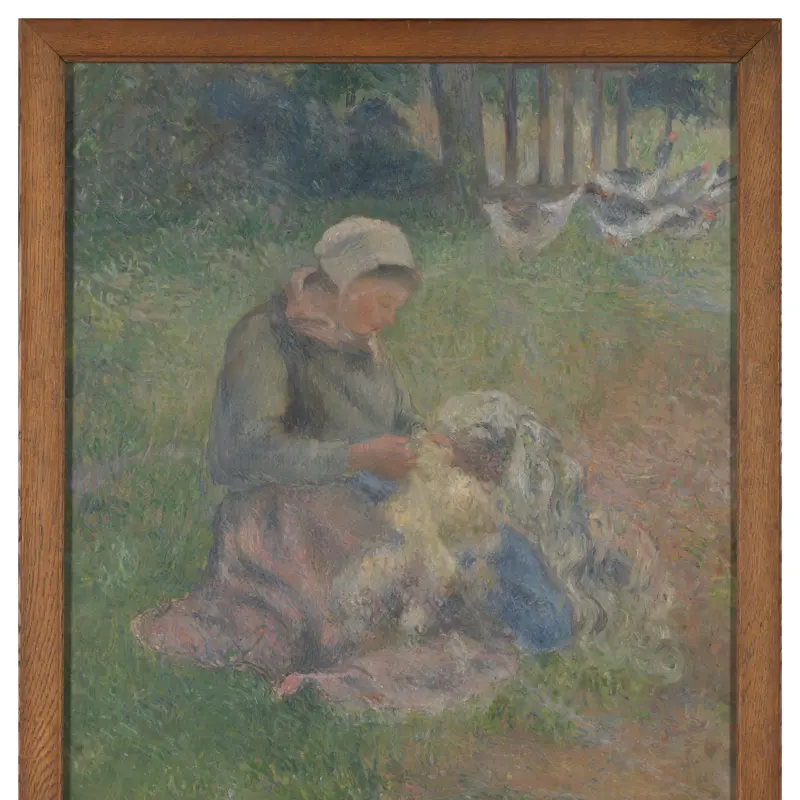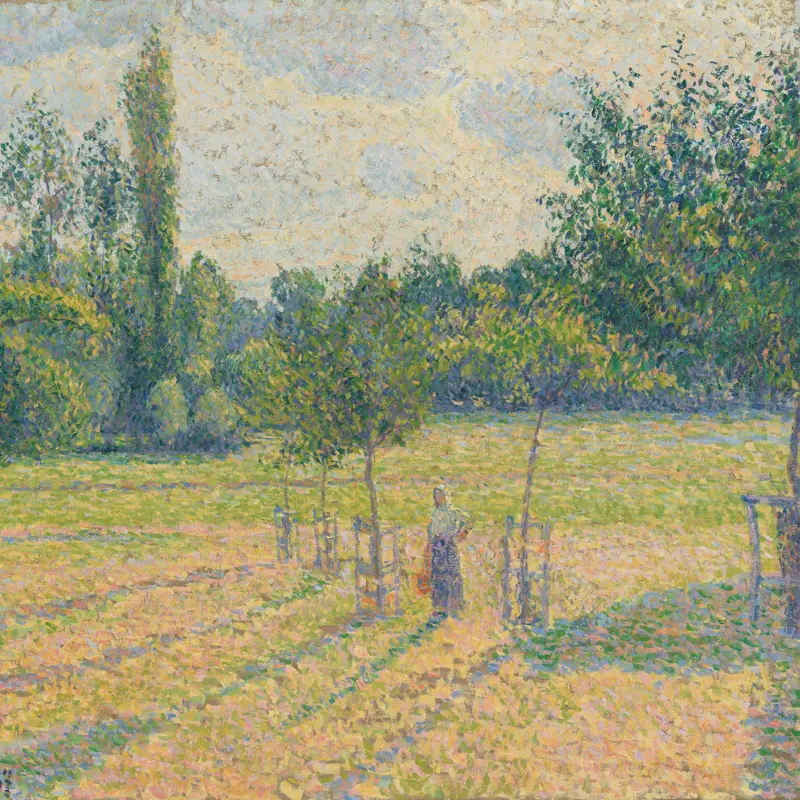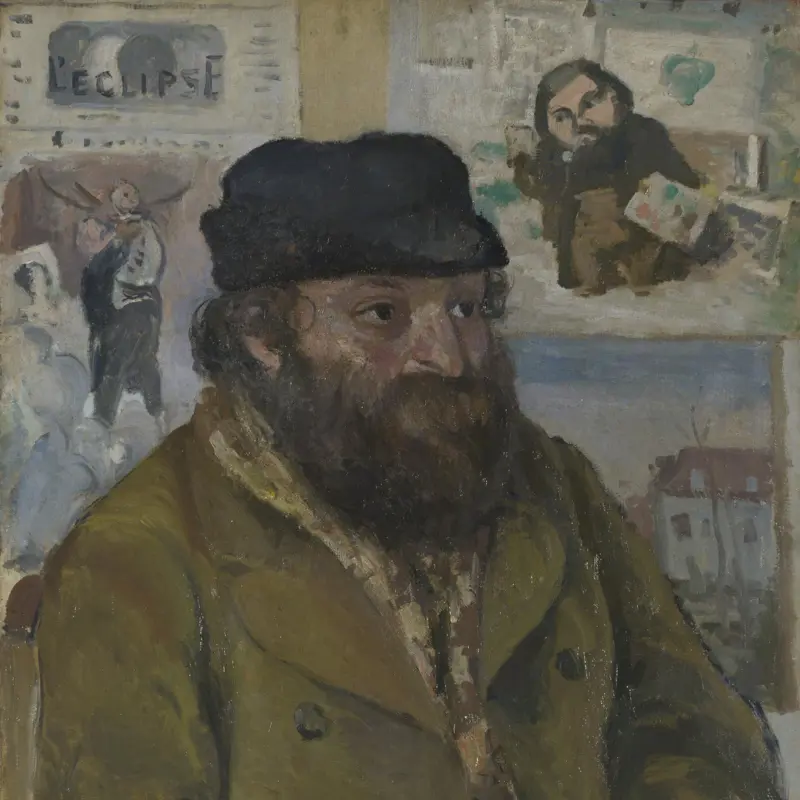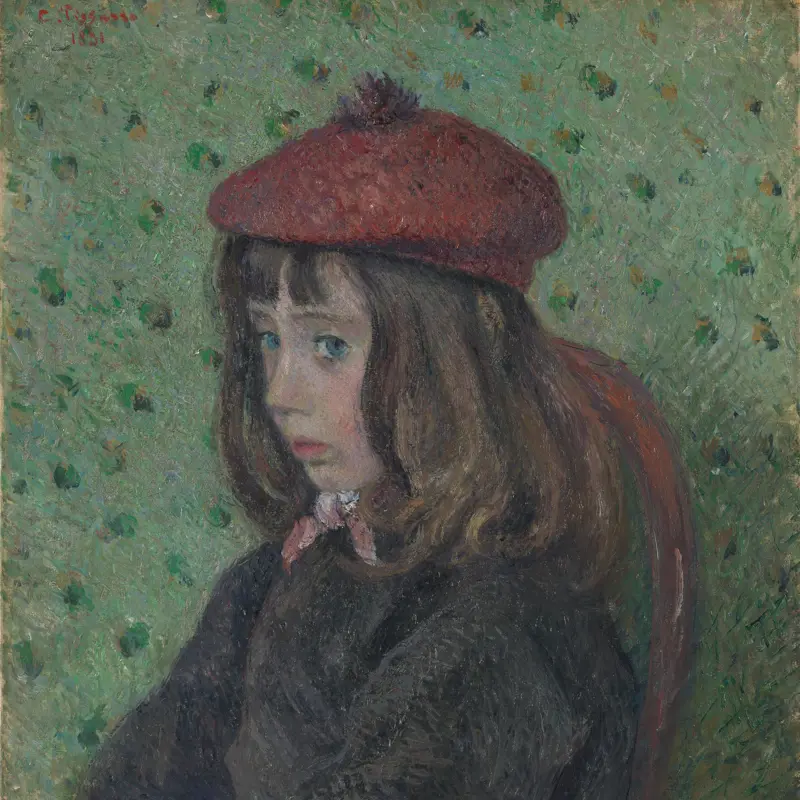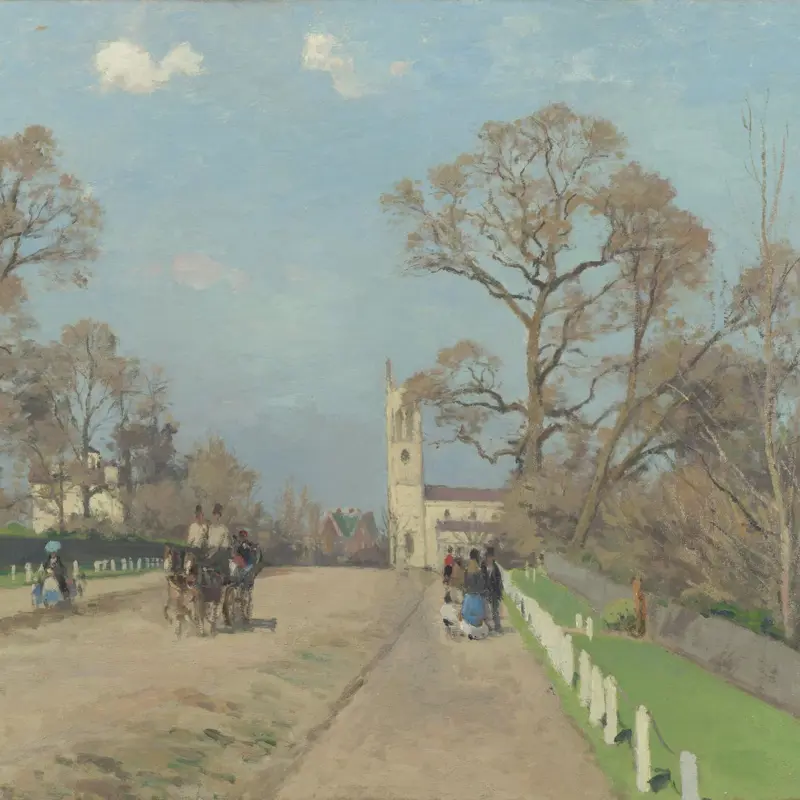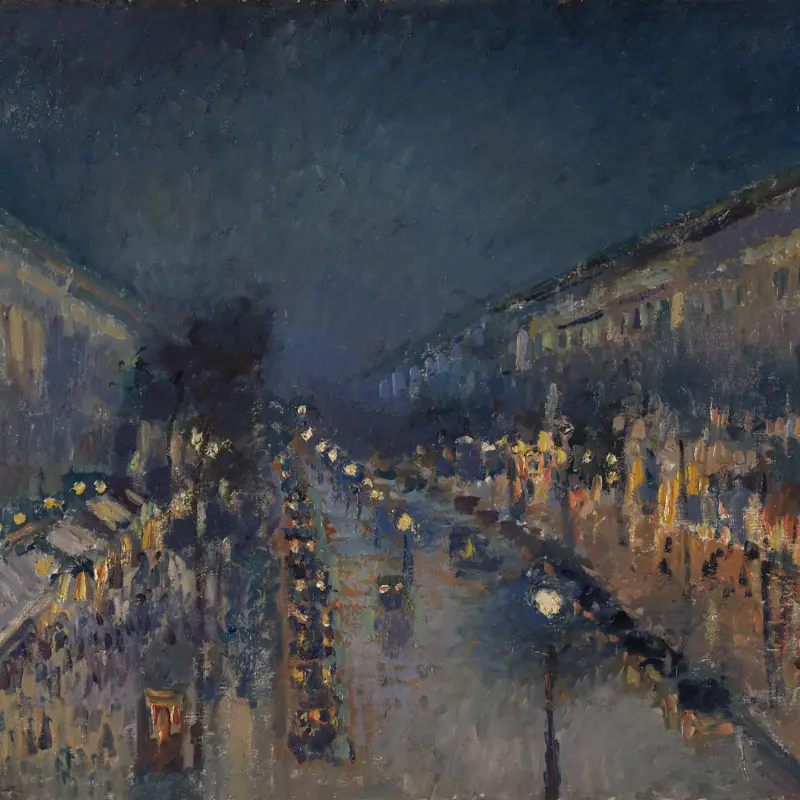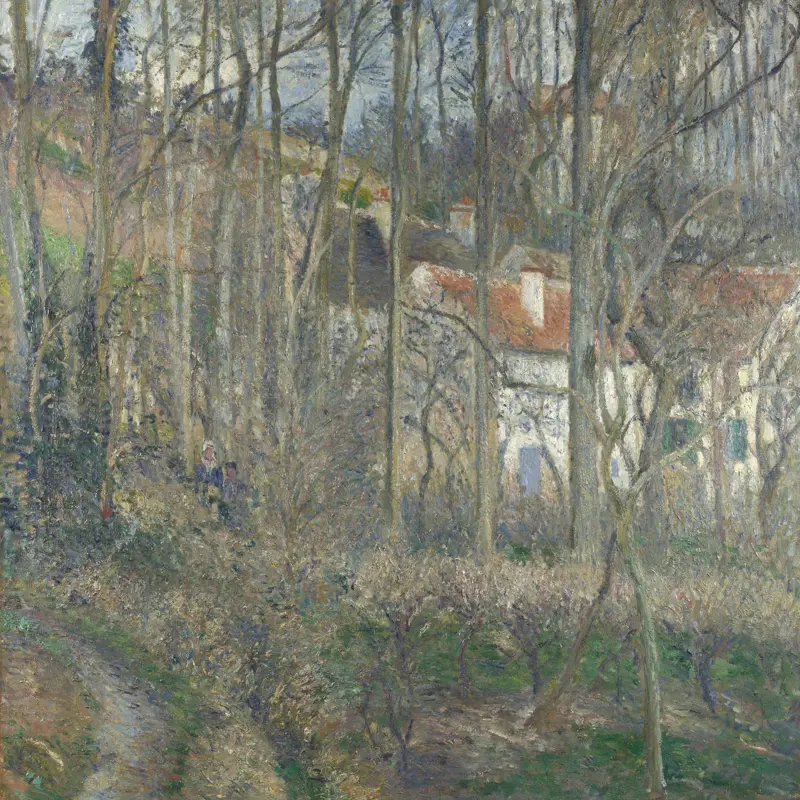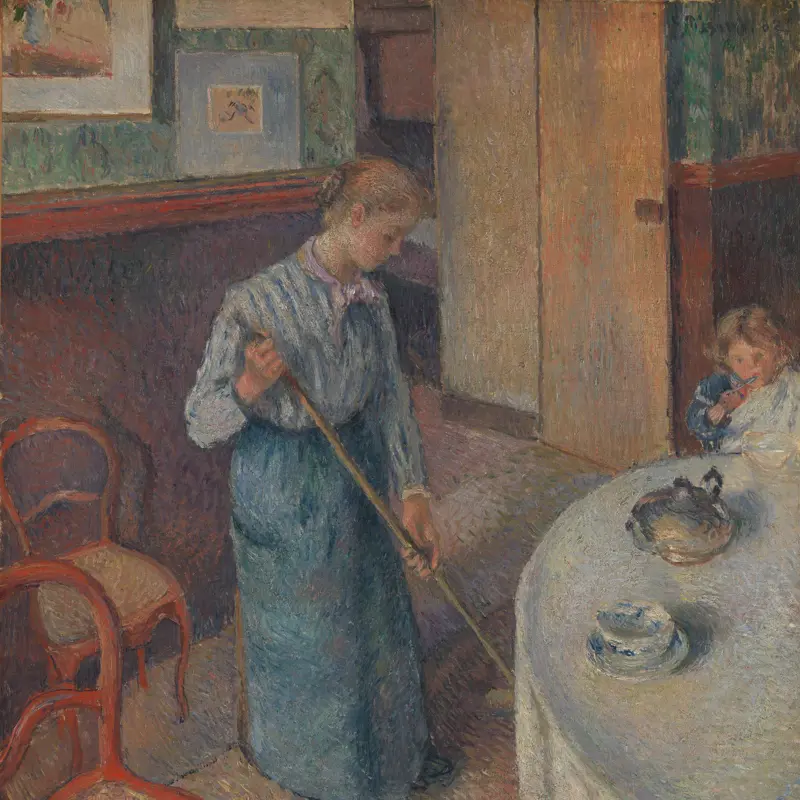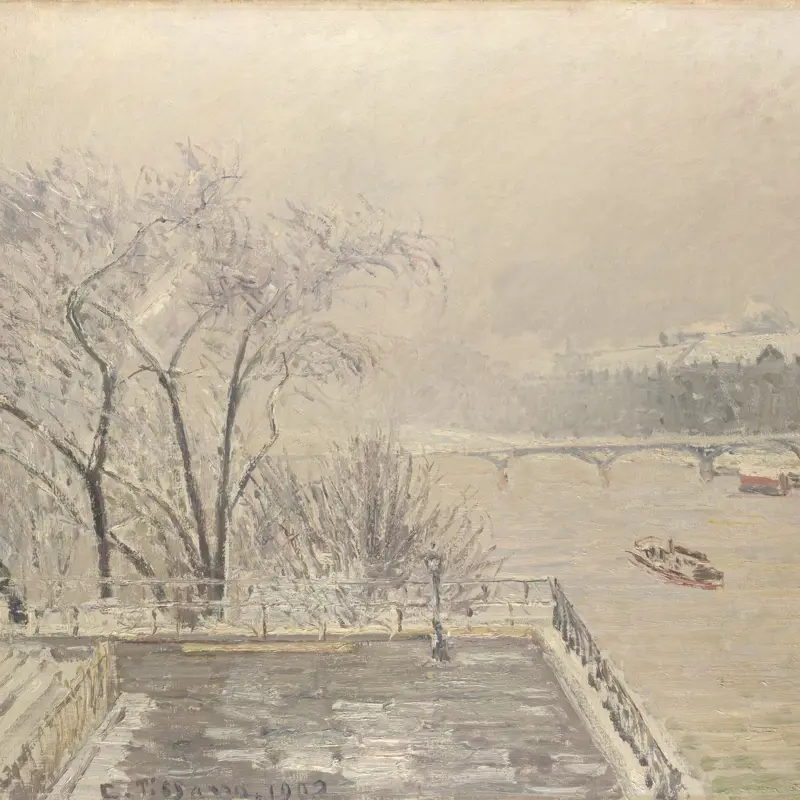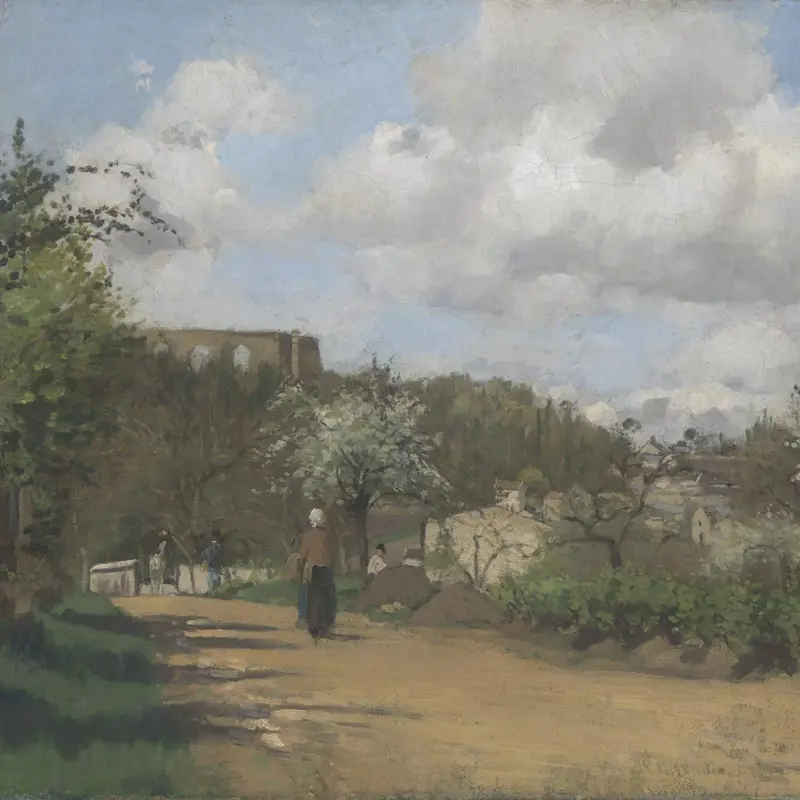Camille Pissarro, 'Fox Hill, Upper Norwood', 1870
About the work
Overview
This is one of 12 surviving pictures that Camille Pissarro made while in self-imposed exile in south London from late 1870 to mid-1871 during the Franco-Prussian war. Perhaps the first picture he painted while in London, it is one of the more rural scenes of the group and is similar to landscapes he had been painting near his home to the west of Paris.
It’s still possible to identify the site today – the road at Fox Hill retains its slight bend. However, Pissarro was perhaps more interested in the atmospheric effects of the light and weather than in precise topography, and the painting may have been first exhibited in London with the title Effet de neige (Snow Effect).
The picture has the appearance of having been painted quickly on site in the open air, as Pissarro worked rapidly and energetically, but it was completed in several stages.
Key facts
Details
- Full title
- Fox Hill, Upper Norwood
- Artist
- Camille Pissarro
- Artist dates
- 1830 - 1903
- Date made
- 1870
- Medium and support
- oil on canvas
- Dimensions
- 35.3 × 45.7 cm
- Inscription summary
- Signed; Dated
- Acquisition credit
- Presented by Viscount and Viscountess Radcliffe, 1964
- Inventory number
- NG6351
- Location
- Room 41
- Collection
- Main Collection
- Frame
- 20th-century Replica Frame
Provenance
Additional information
Text extracted from the ‘Provenance’ section of the catalogue entry in Martin Davies, with additions and some revisions by Cecil Gould, ‘National Gallery Catalogues: French School: Early 19th Century, Impressionists, Post-Impressionists, etc.’, London 1970; for further information, see the full catalogue entry.
Exhibition history
-
2014Inventing Impressionism: Paul Durand-Ruel and the Modern Art MarketThe National Gallery (London)4 March 2015 - 31 May 2015Philadelphia Art Museum24 June 2015 - 13 September 2015
-
2017Impressionists in London: French Artists in Exile 1870-1904Tate Britain2 November 2017 - 7 May 2018Petit Palais, Musée des Beaux Arts de la Ville de Paris20 June 2018 - 14 October 2018
Bibliography
-
1927Lefevre Gallery, A Century of French Painting, n.p. 1927
-
1931Tate Gallery, Exhibition of Oil Paintings by Camille Pissarro (exh. cat., Tate Gallery, 27 June 1931 - 3 October 1931), London 1931
-
1939L.-R. Pissarro and L. Venturi, Camille Pissarro: Son art et son oeuvre, Paris 1939
-
1946Lefevre Gallery, Delacroix to Dufy: French Paintings of the 19th and 20th Centuries, London 1946
-
1948R. Pallucchini, Gli Impressionisti alla XXIV Biennale di Venezia (exh. cat. Biennale (Venezia), 1948), Venice 1948
-
1960Welsh Committee of the Arts Council, How Impressionism Began (exh. cat., National Museum of Wales, 16 July 1961 - 21 August 1961), Cardiff 1960
-
1965The National Gallery, The National Gallery: June 1962 - December 1964, London 1965
-
1970Davies, Martin, and Cecil Gould, National Gallery Catalogues: French School: Early 19th Century, Impressionists, Post-Impressionists etc., London 1970
-
1973A. Callen, The Impressionists in London (exh. cat. Hayward Gallery, 3 January - 11 March 1973), London 1973
-
1977M. Reid, 'Three Paintings of London of 1871: What Do They Represent?', The Burlington Magazine, CXIX, 1977, pp. 251-61
-
1978J. House, 'New Material on Monet and Pissarro in London in 1870-1', The Burlington Magazine, CXX/907, 1978, pp. 636-42
-
1980R.E. Shikes and P. Harper, Pissarro: His Life and Work, London 1980
-
1981C. Lloyd, Camille Pissarro, London 1981
-
1983M. Wilson, French Painting after 1800, London 1983
-
1986M. Reid, 'The Pissarro Family in London: Where did they Live?', in C. Lloyd (ed.), Studies on Camille Pissarro, London 1986, pp. 55-64
-
1988L. Wortley, British Impressionism. A Garden of Bright Images, London 1988
-
1989J. Steer, 'Art History and Direct Perception: A General View', Art History, XII/1, 1989, pp. 93-108
-
1990D. Bomford, R. White and L. Williams, Impressionism (exh. cat. The National Gallery, 1990), London 1990
-
1993R. White and J. Pilc, 'Analyses of Paint Media', National Gallery Technical Bulletin, XIV, 1993, pp. 86-94
-
2001
C. Baker and T. Henry, The National Gallery: Complete Illustrated Catalogue, London 2001
About this record
If you know more about this work or have spotted an error, please contact us. Please note that exhibition histories are listed from 2009 onwards. Bibliographies may not be complete; more comprehensive information is available in the National Gallery Library.

